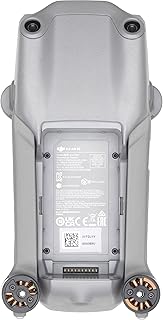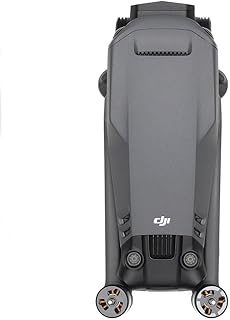RotorLogic Drone: Applications and Potential Impact
While you haven't provided specifics about the "RotorLogic Drone," I can offer a comprehensive overview of drone applications and their potential impact. We can then discuss how a hypothetical "RotorLogic Drone" could fit into this landscape.
General Drone Applications:
* Delivery & Logistics: Package delivery, medical supplies, emergency aid, goods transport in remote areas.
* Inspection & Monitoring: Infrastructure (bridges, pipelines, power lines), agriculture (crop health, pest detection), construction, security, search & rescue.
* Mapping & Surveying: 3D mapping, aerial photography, terrain analysis, urban planning, environmental monitoring.
* Entertainment & Media: Aerial photography and videography, film production, live events, sports broadcasting.
* Agriculture: Precision farming, crop scouting, spraying, livestock monitoring.
* Law Enforcement & Security: Surveillance, search & rescue, border patrol, evidence collection, crowd control.
* Research & Development: Scientific research, environmental monitoring, data collection, meteorology.
Potential Impact:
* Economic Growth: New industries, job creation, increased efficiency, reduced costs.
* Improved Efficiency: Faster and more efficient delivery, inspection, and data collection.
* Enhanced Safety: Remote operation reduces human risk in hazardous environments.
* Environmental Benefits: Reduced emissions, efficient resource management, monitoring of environmental changes.
* Social Impact: Improved accessibility, enhanced public safety, new forms of entertainment.
Challenges and Considerations:
* Regulation & Safety: Ensuring safe airspace, addressing privacy concerns, setting clear operating guidelines.
* Infrastructure: Development of drone delivery networks, charging infrastructure, communication networks.
* Public Perception: Addressing concerns about privacy, security, and noise pollution.
* Technical Challenges: Battery life, payload capacity, autonomous navigation, weather resistance.
How "RotorLogic Drone" Could Fit In:
To understand the potential impact of the "RotorLogic Drone," we need details about its features and capabilities. Some questions to consider:
* What specific tasks is the drone designed for?
* What are its unique technical features and advantages?
* What industries or sectors could it benefit?
* How does it address existing challenges in the drone market?
By considering these points, we can assess the "RotorLogic Drone's" potential impact and determine its contribution to the evolving world of drone technology.
Example:
Let's say the "RotorLogic Drone" is designed for precision agriculture, with features like:
* Long battery life for extended flight times
* High-resolution sensors for detailed crop health monitoring
* Advanced AI algorithms for autonomous flight and data analysis
This drone could have a significant impact on agriculture, enabling farmers to:
* Optimize fertilizer and pesticide use based on real-time data
* Identify and treat diseases early to prevent crop loss
* Reduce environmental impact by using resources more efficiently
Conclusion:
The potential of drones is vast, with applications across numerous sectors. The success of the "RotorLogic Drone" will depend on its specific features and capabilities, how it addresses existing challenges, and how it contributes to the growth and development of the drone industry.


